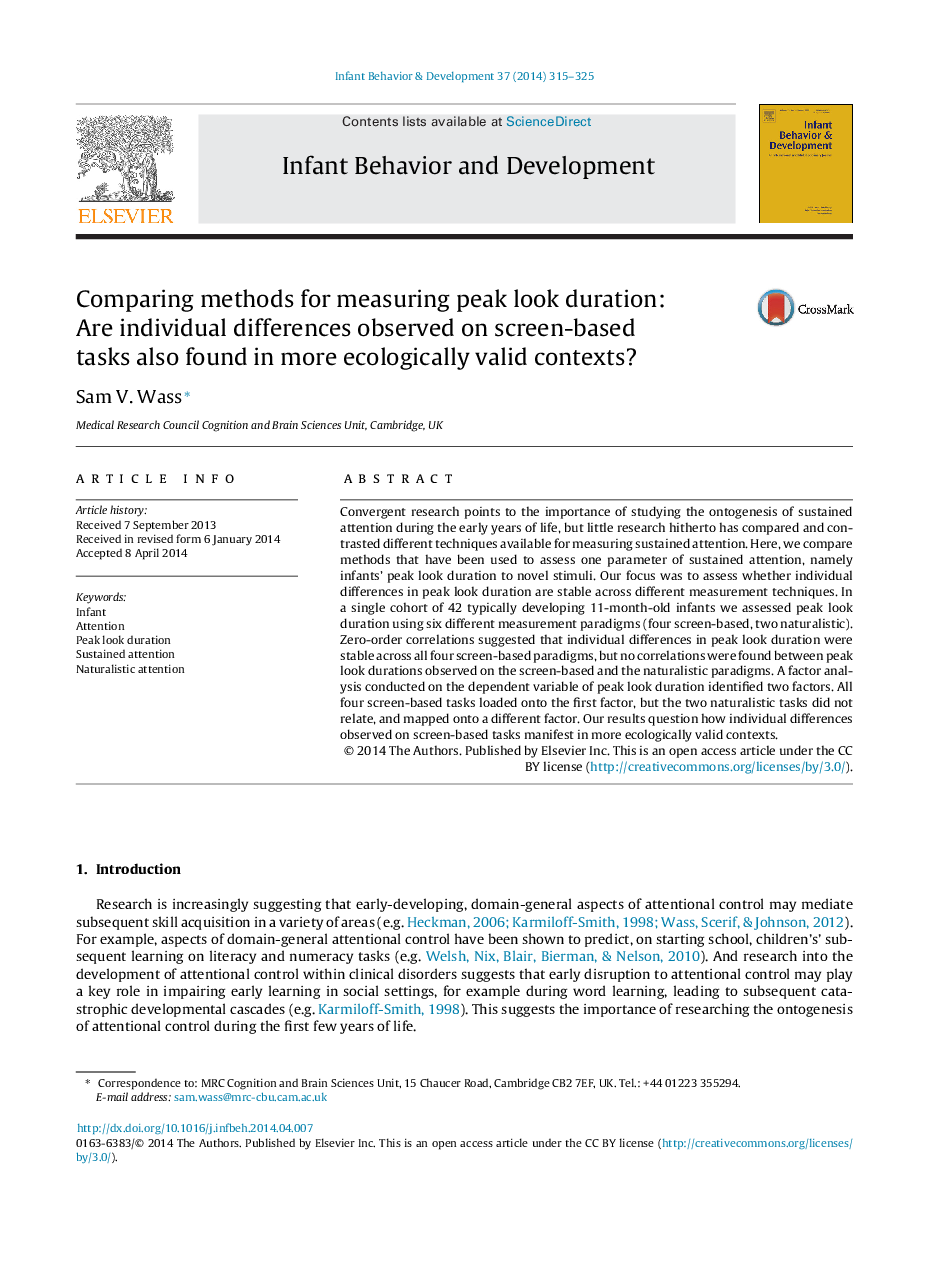| Article ID | Journal | Published Year | Pages | File Type |
|---|---|---|---|---|
| 10452654 | Infant Behavior and Development | 2014 | 11 Pages |
Abstract
Convergent research points to the importance of studying the ontogenesis of sustained attention during the early years of life, but little research hitherto has compared and contrasted different techniques available for measuring sustained attention. Here, we compare methods that have been used to assess one parameter of sustained attention, namely infants' peak look duration to novel stimuli. Our focus was to assess whether individual differences in peak look duration are stable across different measurement techniques. In a single cohort of 42 typically developing 11-month-old infants we assessed peak look duration using six different measurement paradigms (four screen-based, two naturalistic). Zero-order correlations suggested that individual differences in peak look duration were stable across all four screen-based paradigms, but no correlations were found between peak look durations observed on the screen-based and the naturalistic paradigms. A factor analysis conducted on the dependent variable of peak look duration identified two factors. All four screen-based tasks loaded onto the first factor, but the two naturalistic tasks did not relate, and mapped onto a different factor. Our results question how individual differences observed on screen-based tasks manifest in more ecologically valid contexts.
Keywords
Related Topics
Life Sciences
Neuroscience
Behavioral Neuroscience
Authors
Sam V. Wass,
